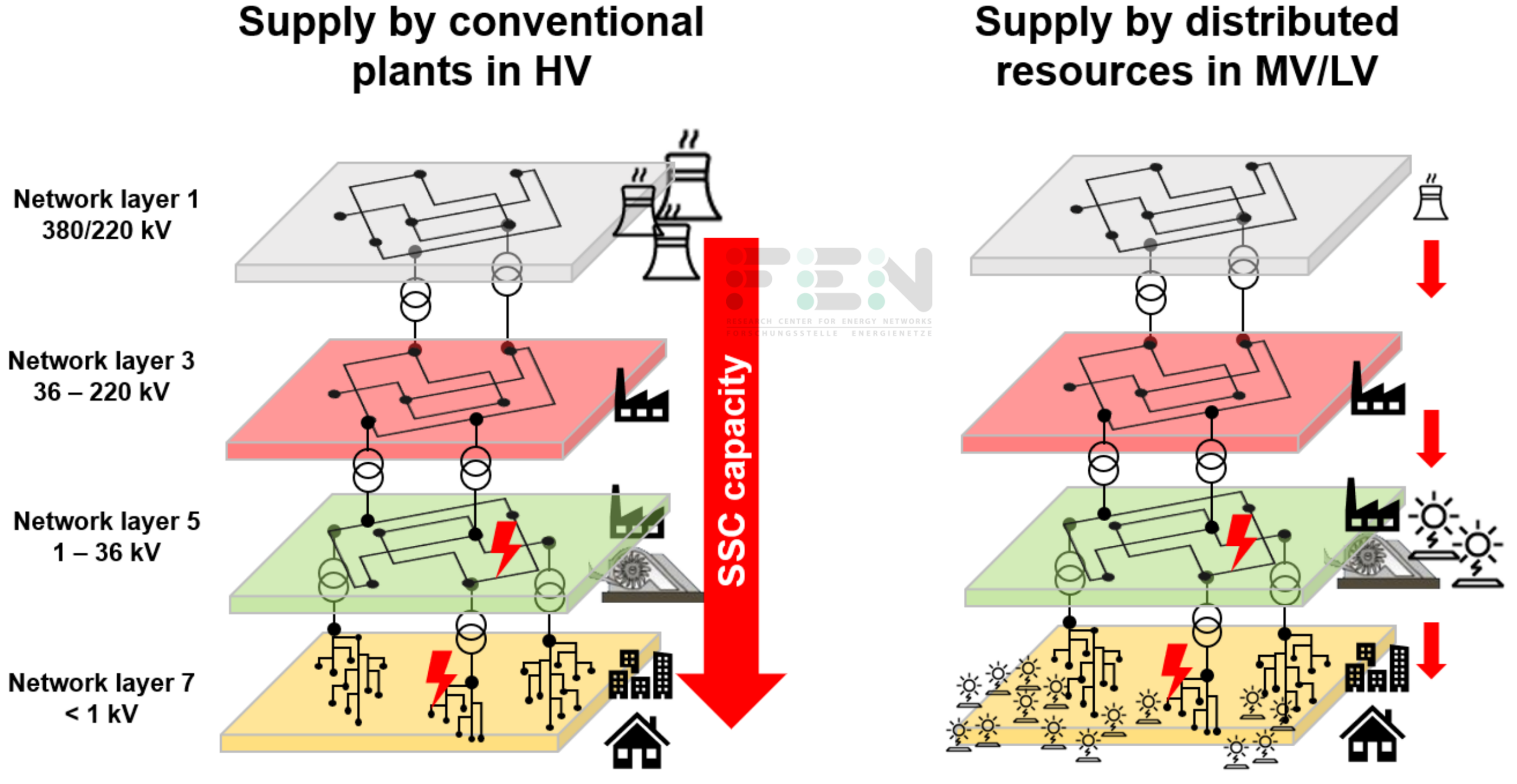PRODICON Power system protection in presence of high shares of distributed converter-interfaced resources
The overarching purpose of the project is to devise a qualitative and quantitative framework to analyze the potential impacts of converter-interfaced resources on the protection layouts of distribution grids (MV & LV), especially when the majority of large-scale conventional generation at high voltage (HV) and extra-high voltage (EHV) is de-activated during very high shares of distributed generation in MV and LV
grids. The specific objectives of this project are as follows:
- to identify the sufficiently accurate modelling type and platform (e.g., RMS) for converter-interfaced sources (e.g., solar PVs) in protection studies, especially in comparison with the calculations of industry standard, IEC60909-2016,
- to study the impacts of reduction in short-circuit current contributions from EHV and HV grids to faults in MV and LV grids,
- to assess the fault levels (i.e., short-circuit current, SCC, levels) in a given grid for various operating states (e.g., very high share of distributed generation),
- to formulate the impacts of different fault levels in selected scenarios, and
- to elaborate on potential mitigation measures.
As part of the Energy Strategy 2050, Switzerland is planning to decommission large-scale nuclear power plants in the near future and increase the shares of variable renewable energy resources (VRE) in its electricity supply. Such a paradigm shift will have to be planned with care so that the security and reliability of the electricity supply is not jeopardized.
Following a fault (e.g., short circuit at a substation or along a transmission/distribution overhead line/cable), the protection system should (a) properly detect and isolate the fault, and (b) act fast enough to guarantee that a post-fault steady-state can be reached ensuring frequency and voltage stability, in transmission grids.
The distribution grids are designed and operated relying on the fact that
- the voltage at the transmission substation is stiff and
- the generators connected to the transmission network can provide sufficiently large short-circuit currents (SCC) in order to trigger (i.e. detect and clear) the overcurrent protection systems during faults in distribution network.
These two assumptions have to be revisited, when aforementioned paradigm shift is planned. This is due to the fact that the location and availability of the VREs are time-variant and the behavior of the converter-interfaced generators during disturbances are unprecedented, compared to conventional rotating machines: fault current levels and fault current waveforms are drastically different.

This project will use a holistic approach to investigate and assess the behavior and subsequent impacts of converter-interfaced resources as well as new electric demand (i.e. heat pumps) on the existing protection systems in distribution grids, specifically in Network Layers 5 and 7. The holistic framework is developed such that the time-variant SCC capacities and the converter behaviour during short-circuits are appropriately taken into account. To achieve this goal, the role of transmission sources are captured in an aggregated manner, without detailed modeling, while the phenomena in distribution grids will be analyzed in sufficient detail. [Tool: in-house FlexDyn, Power-Factory]
